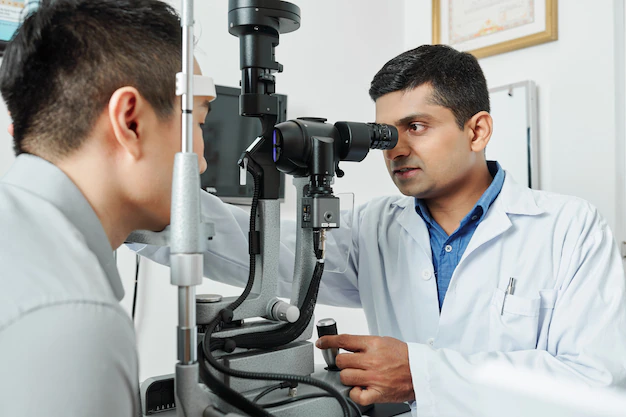Diagnosing Age-Related Macular Degeneration

Age-related macular degeneration (AMD) is typically diagnosed through a comprehensive eye exam that includes a variety of tests to evaluate the condition of the retina, including the macula, which is the part of the retina responsible for central vision.
During the exam, the ophthalmologist will use an instrument called an ophthalmoscope to look for signs of drusen, which are small yellow or white deposits that can develop under the retina in early-stage AMD. They may also look for pigment changes or other abnormalities in the retina.
Another test that may be used to diagnose AMD is called fluorescein angiography. In this test, a special dye is injected into a vein in the arm and travels to the blood vessels in the eye. A series of photographs are then taken to show the dye as it moves through the blood vessels in the retina. This can help the ophthalmologist identify areas of leakage or abnormal blood vessel growth that may be indicative of more advanced AMD.
Optical coherence tomography (OCT) is another test that may be used to diagnose and monitor AMD. This test uses light waves to create detailed images of the retina, allowing the ophthalmologist to see the thickness and integrity of the layers of the retina, including the macula. This can help them detect any abnormalities or changes in the retina that may be associated with AMD.
If you are experiencing changes in your vision or have a family history of AMD, it is important to schedule regular eye exams with an ophthalmologist to monitor your eye health and catch any potential problems early.
